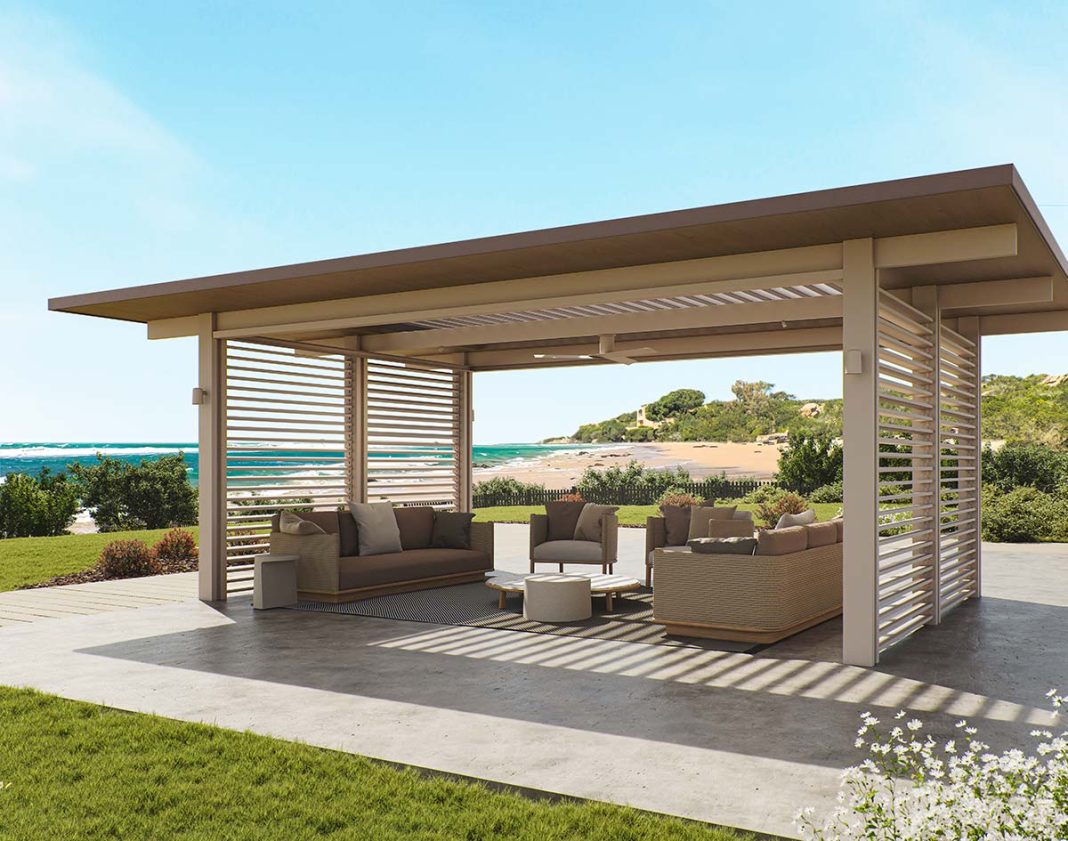The latest outdoor project from Kettal – the Pavilion V designed by Vincent Van Duysen – reflects the latest trend in design for the open air: that of creating continuity between indoor and outdoor spaces, accentuating the connection between people and the surrounding environment. A company located just a few kilometers from Barcelona and specialized in outdoor furnishings, Kettal works with outstanding designers like Patricia Urquiola, the Bouroullec brothers, Doshi Levien, Jasper Morrison and Rodolfo Dordoni.
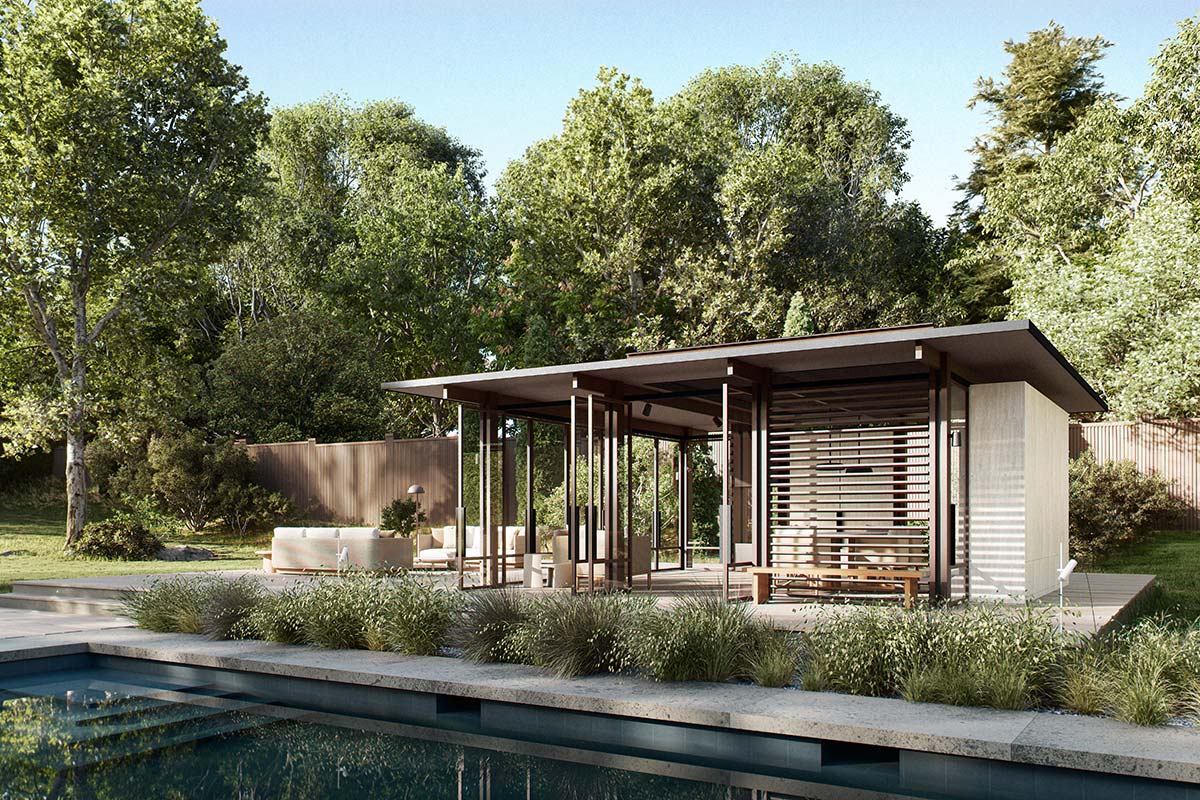
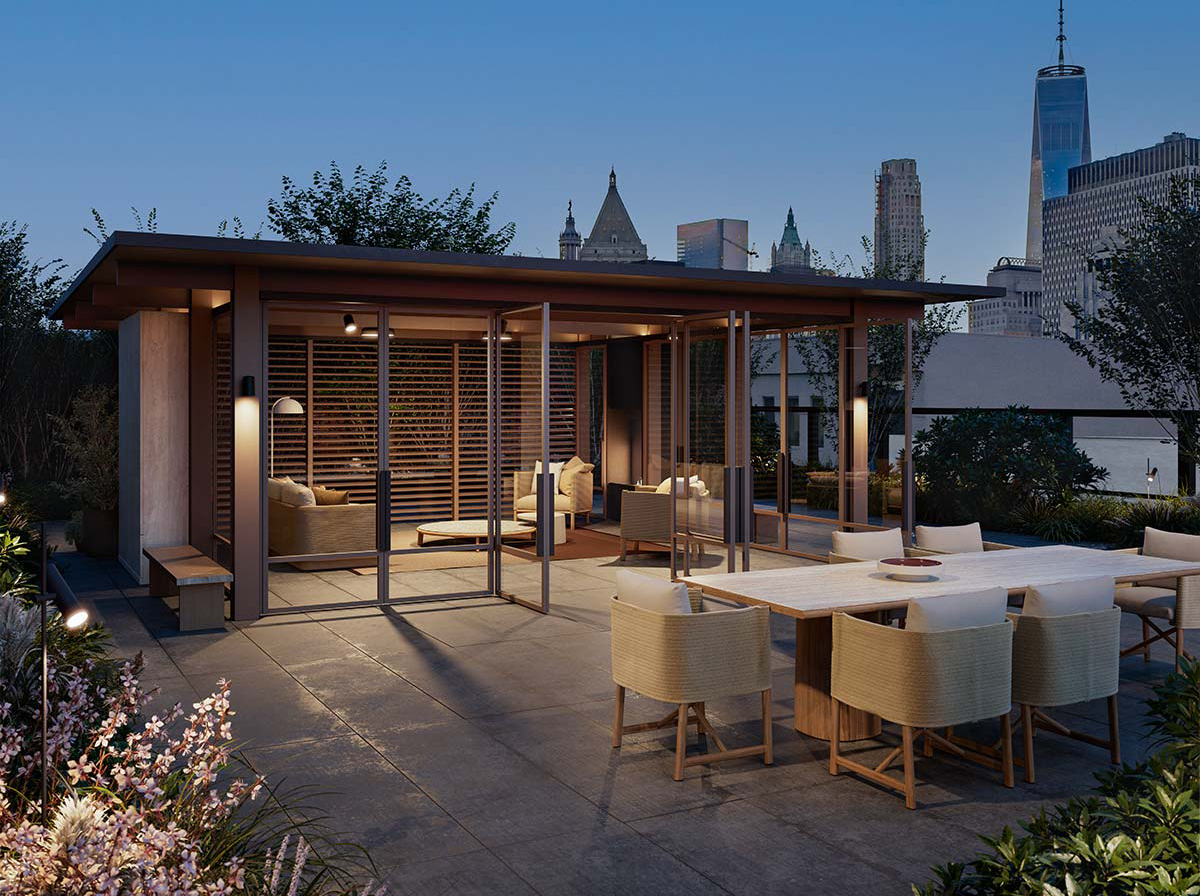
While in Pavilion H the focus was on transforming the structure into a smart home, controlled from a distance or from the sofa using a mobile phone and the Kode app, with Pavilion V the concept shifts to the creation of an eco-sustainable space for free compositions, to respond to the widest range of needs, in both residential and contract settings.
For this project the Belgian architect has found inspiration in the American Modernism of the Fifties, which reflected a more industrial logic than in the past, based on new construction technologies and the principles of functionalism. The first step of the idea was therefore to think about an open and multifunctional plan for flexible, adaptable and easily modified spaces.
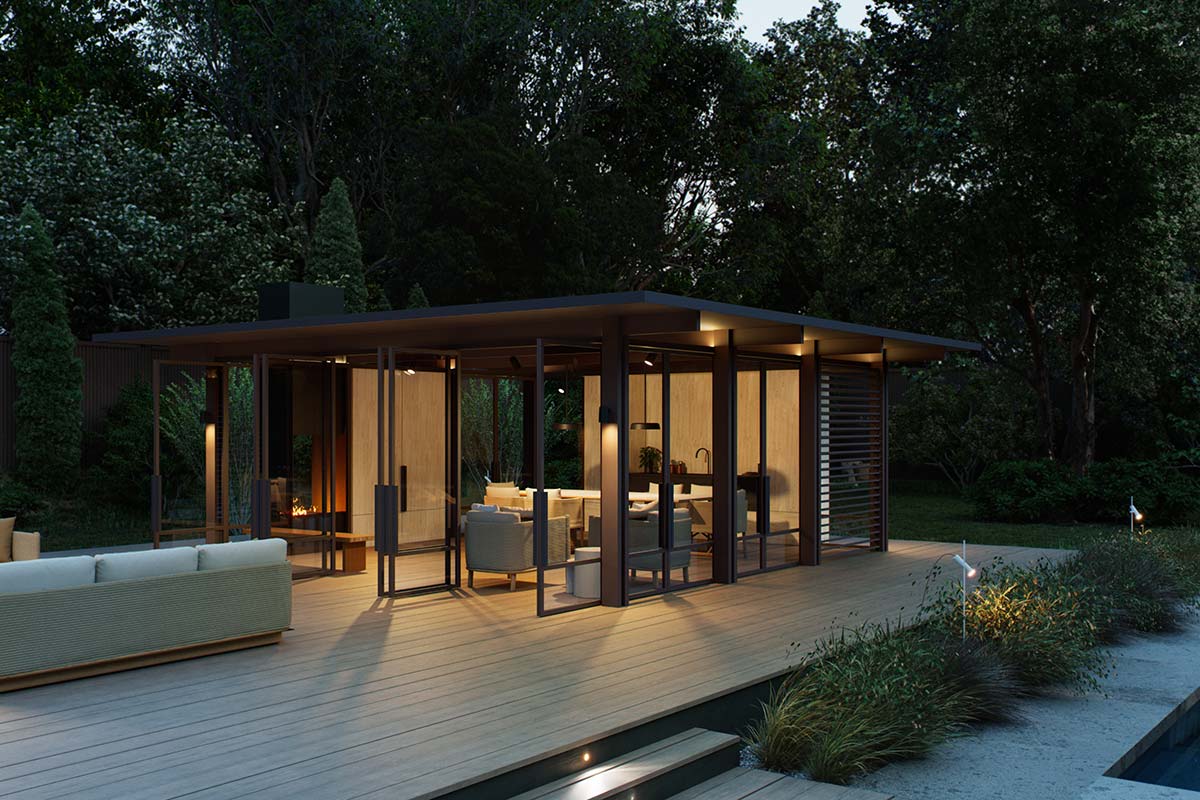
The harmony between those who live in Pavilion V and their surroundings is shaped by two main elements: the free plan and the intelligent use of light. The structure is composed of gate-like frames placed at intervals of two meters in a longitudinal direction, supporting an overhanging and insulating roof to permit modular construction. The lateral columns frame and filter the view of the garden, allowing for visual contact with the outside. The free spaces between the columns can be utilized to assemble various claddings: glass, sunscreen blades, solid stoneware panels, wardrobes, a kitchen, a fireplace, bringing complete personalization to the space based on the needs of users.
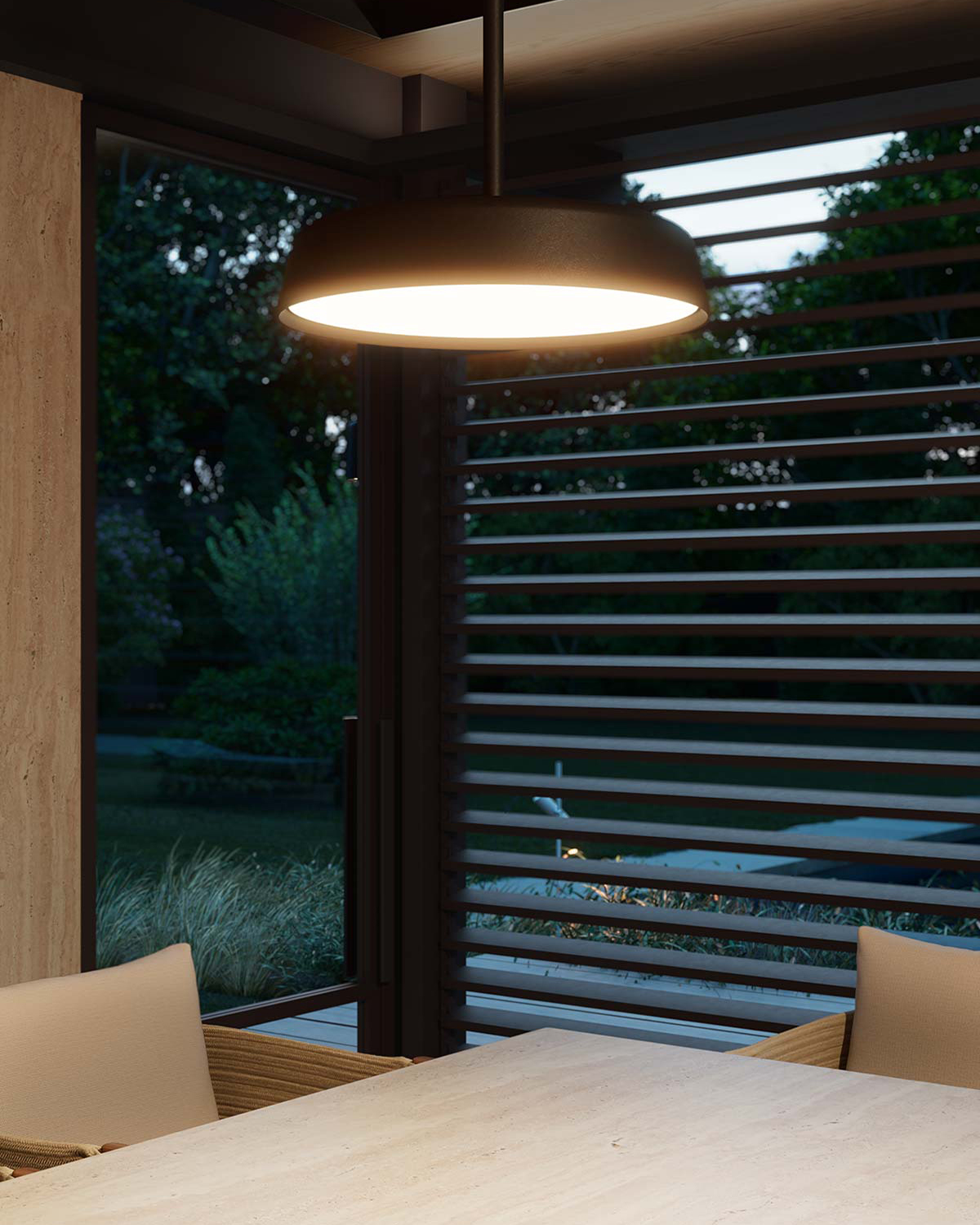
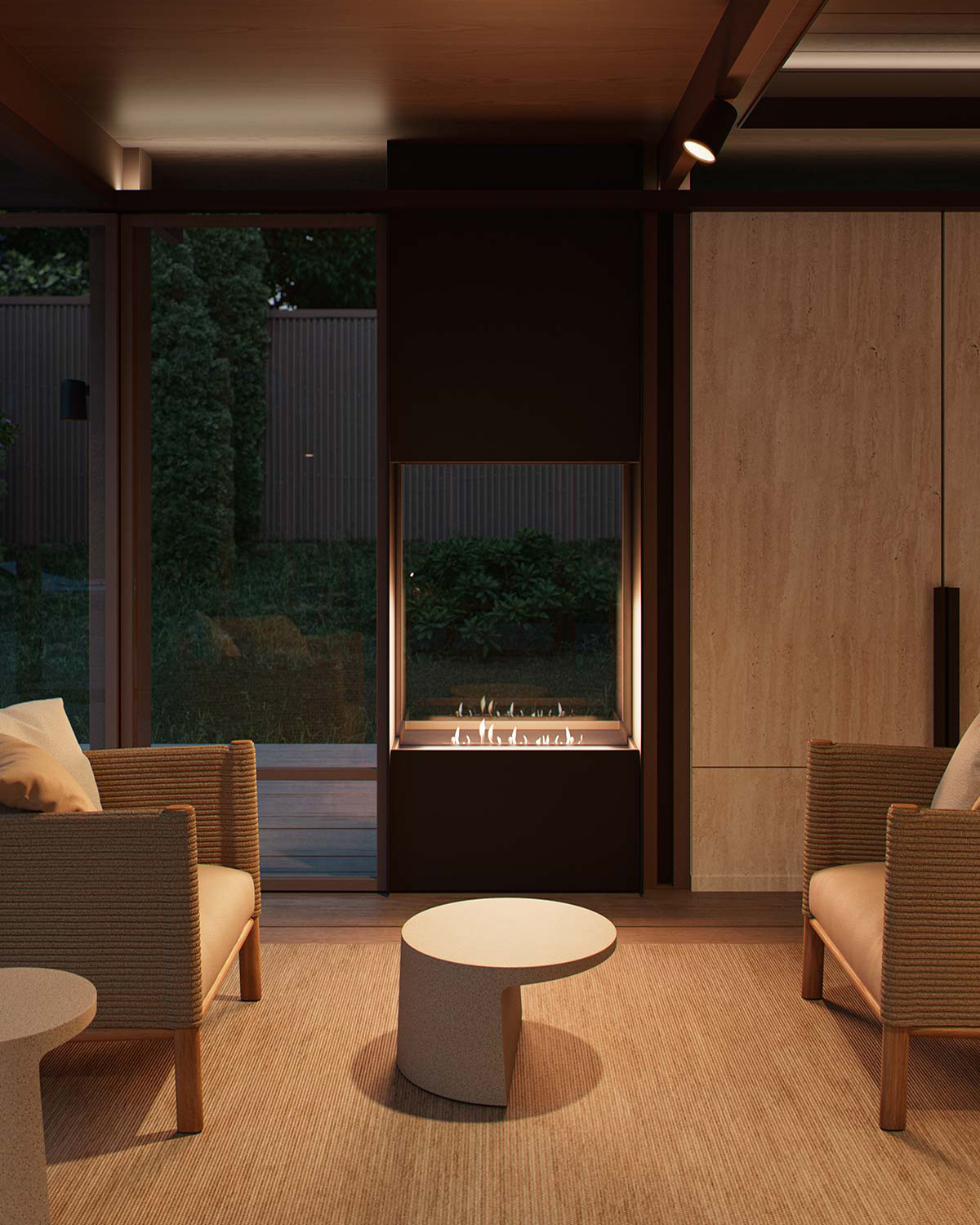
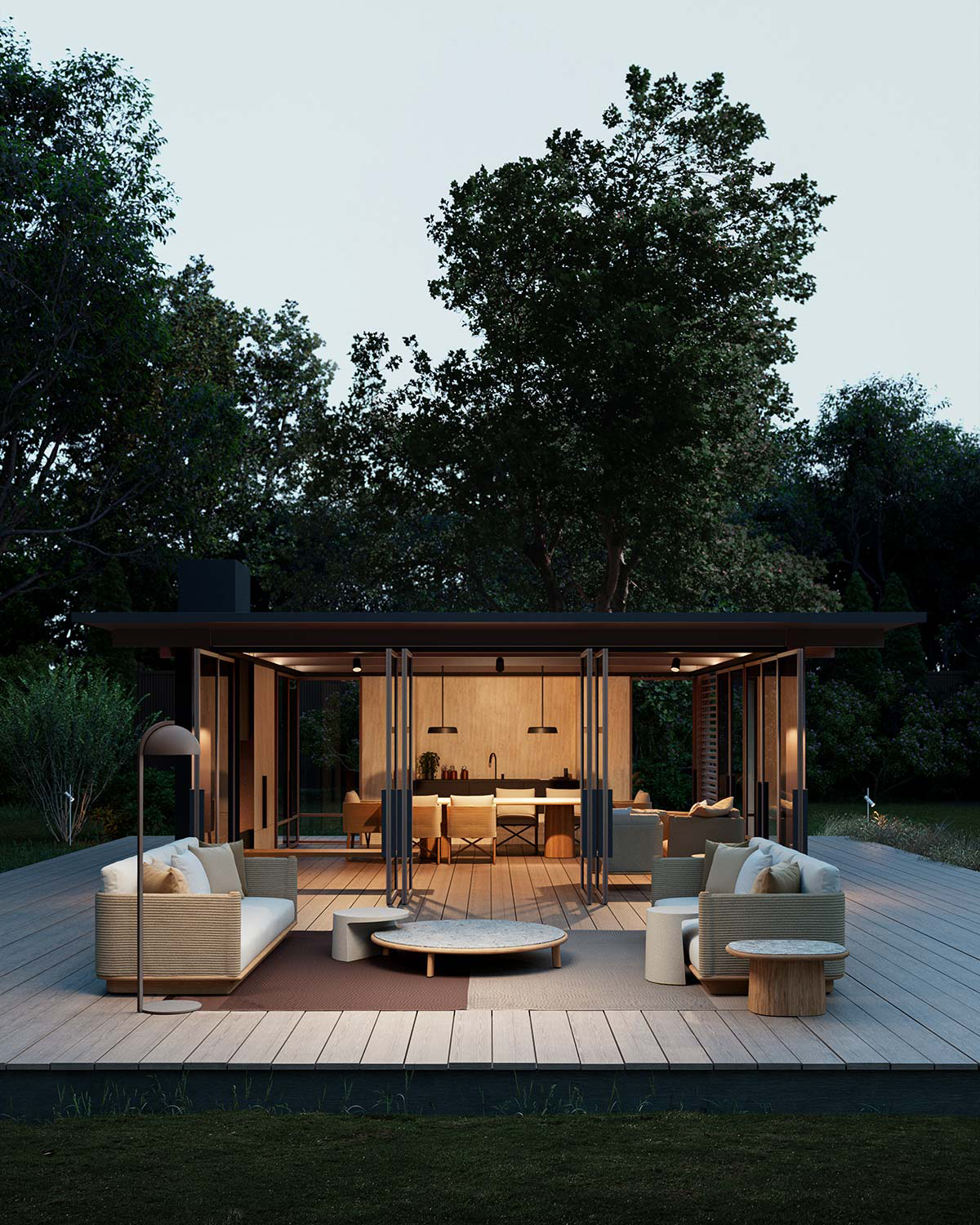
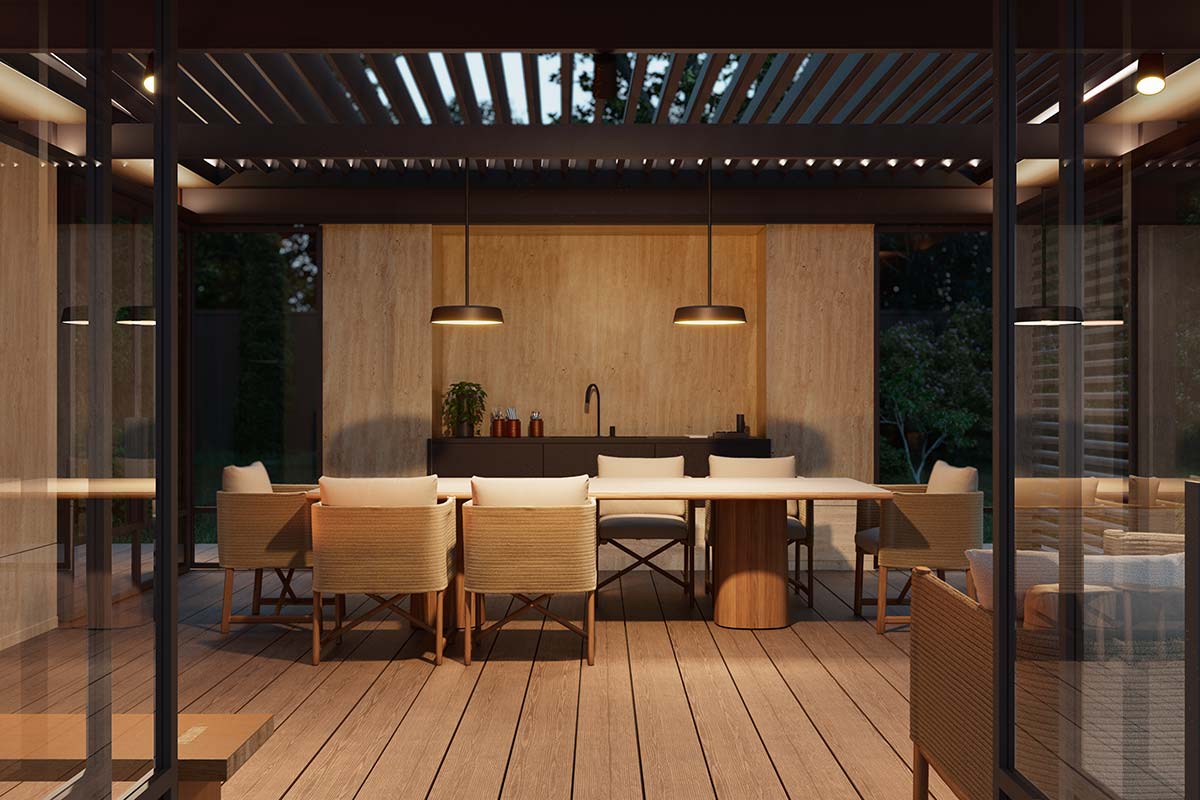
Pavilion V pays close attention to eco-sustainability, choosing green technologies wherever possible: the durable materials have low CO2 emissions, with 75% use of recycled aluminium. The pavilion is self-sufficient in terms of consumption: the structure has solar panels, and the roof provides thermal insulation. The ventilation is also ecological, arriving from above by means of a bioclimatic roof. Finally, the whole construction can be dismantled, easily transported and reutilized elsewhere.

